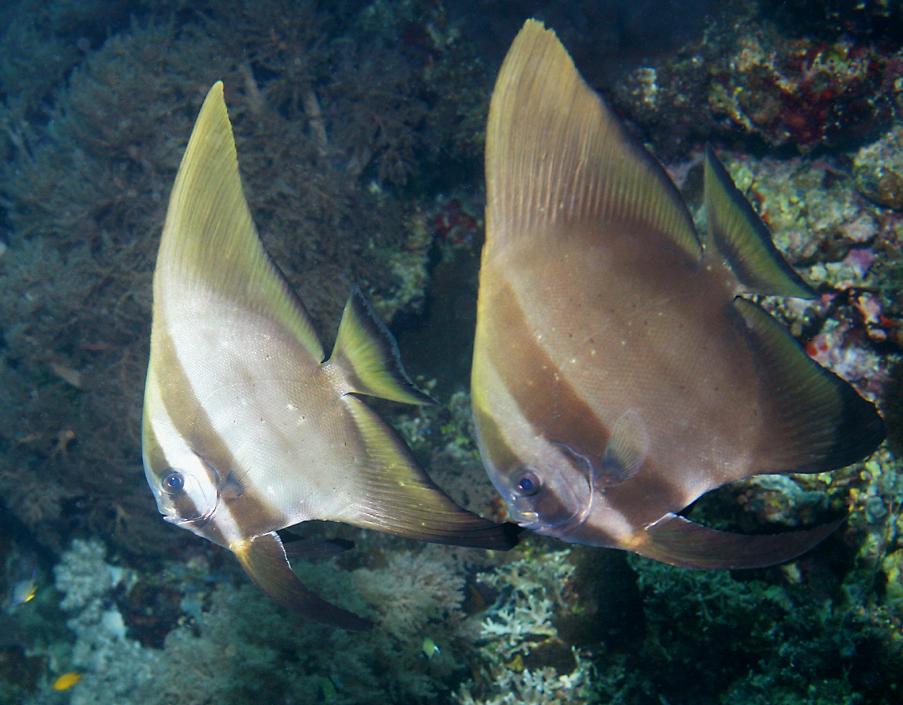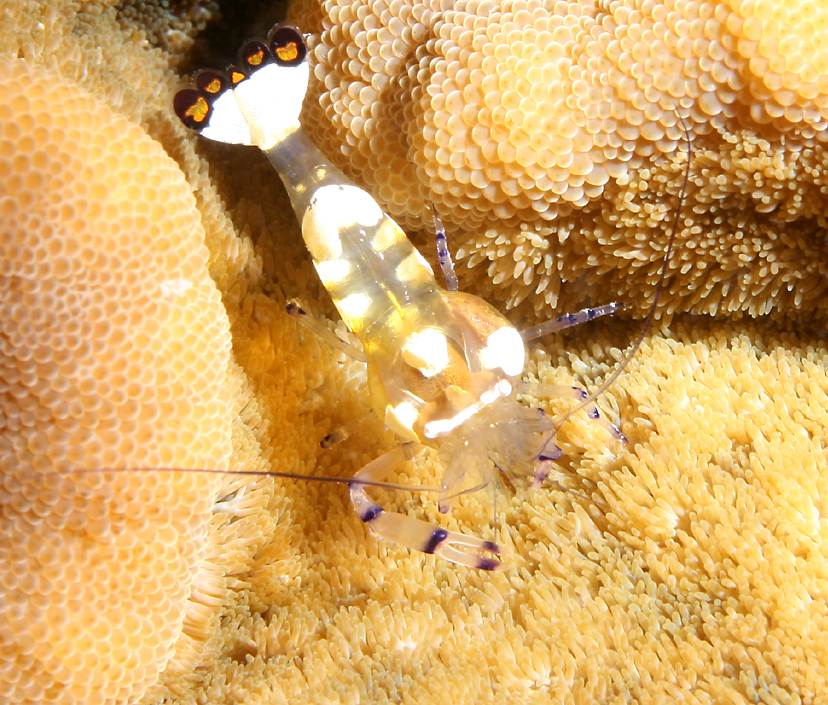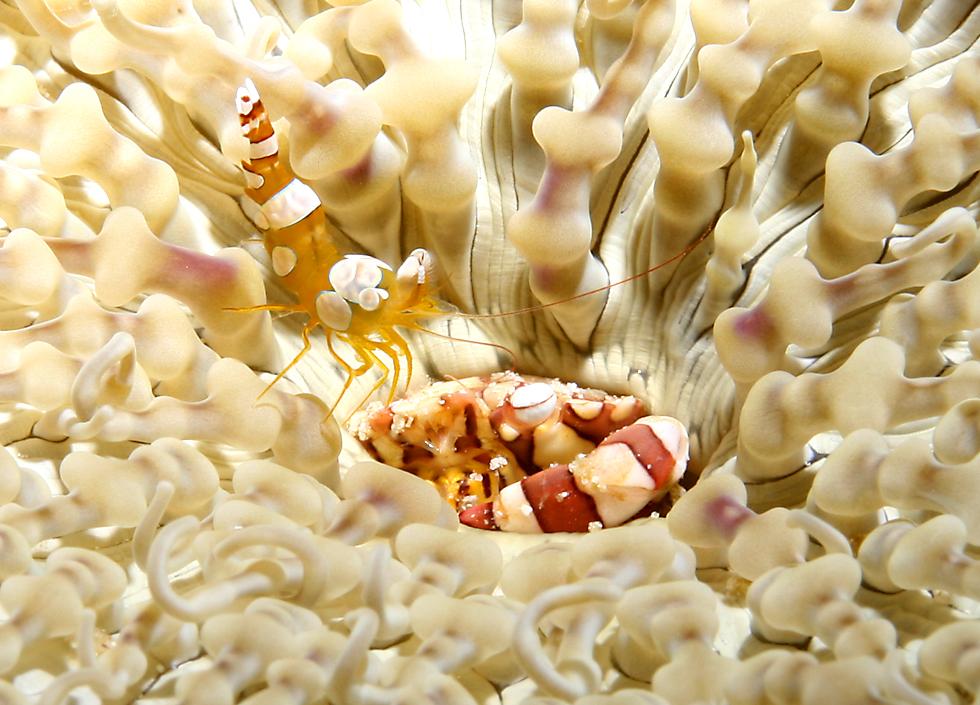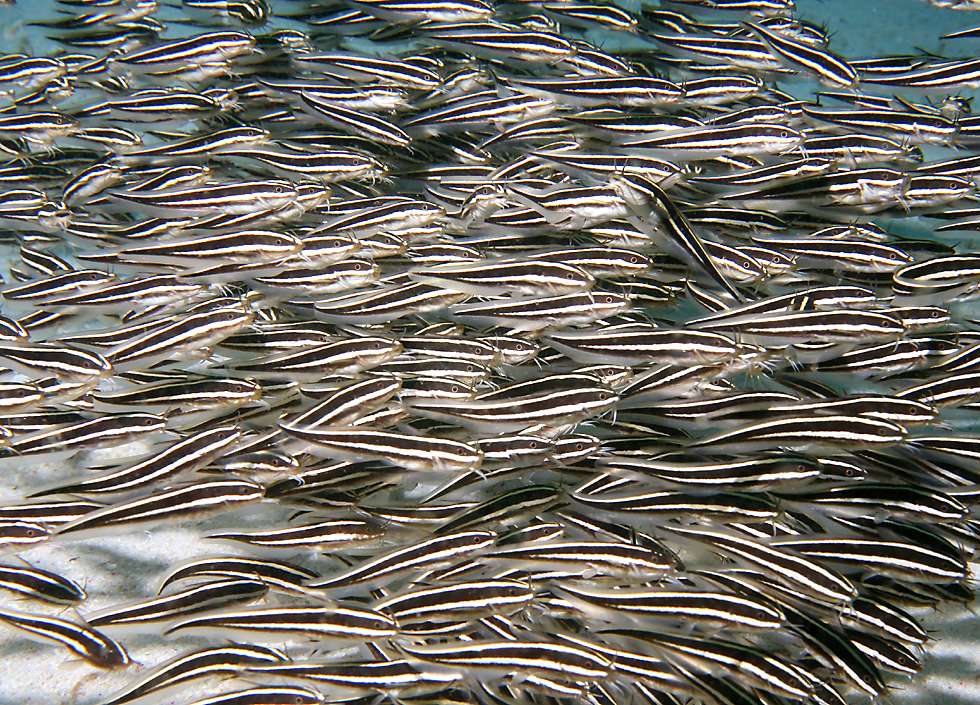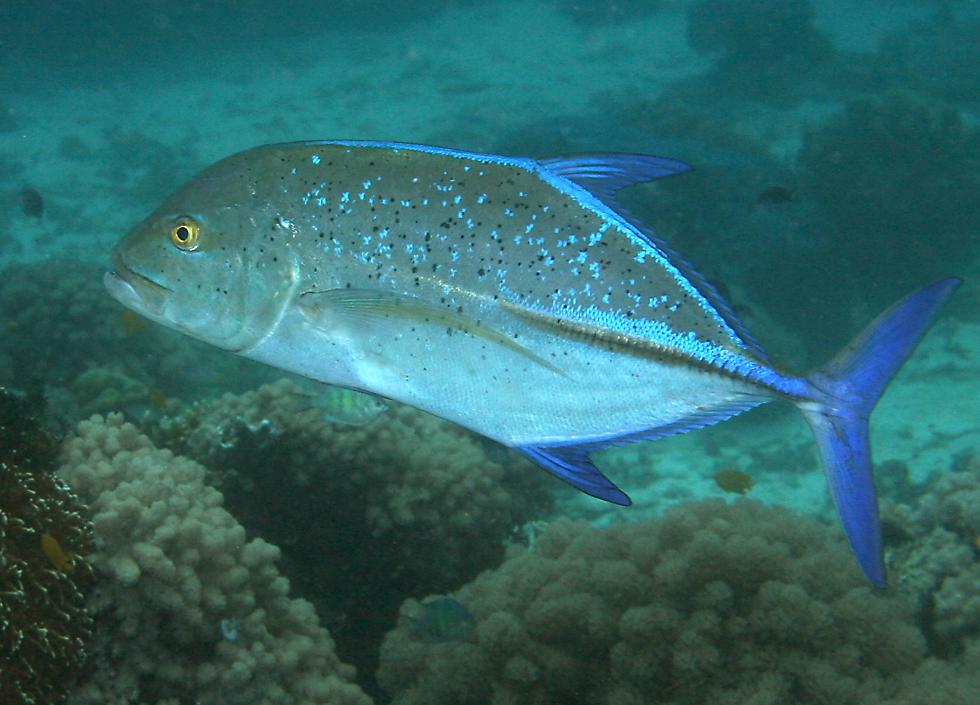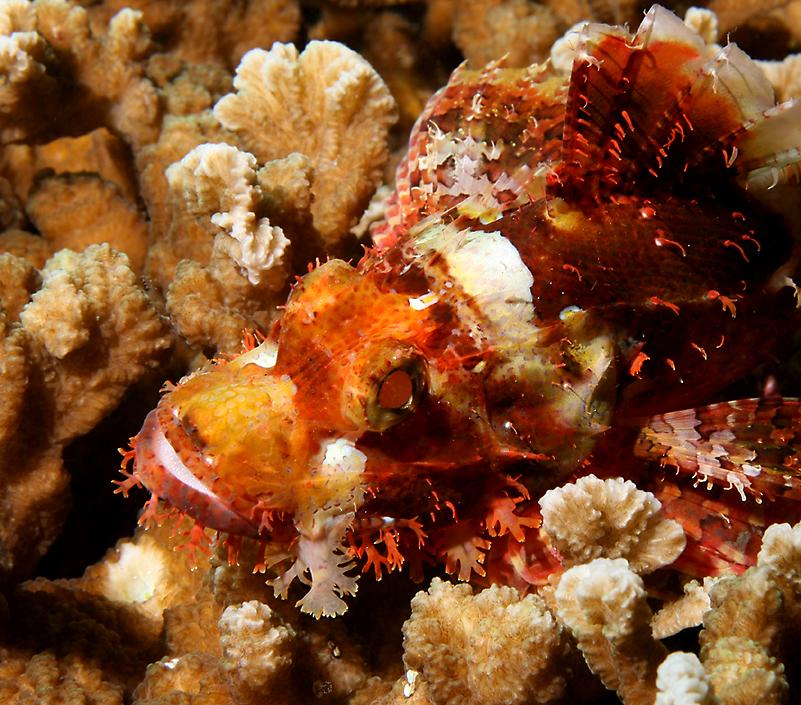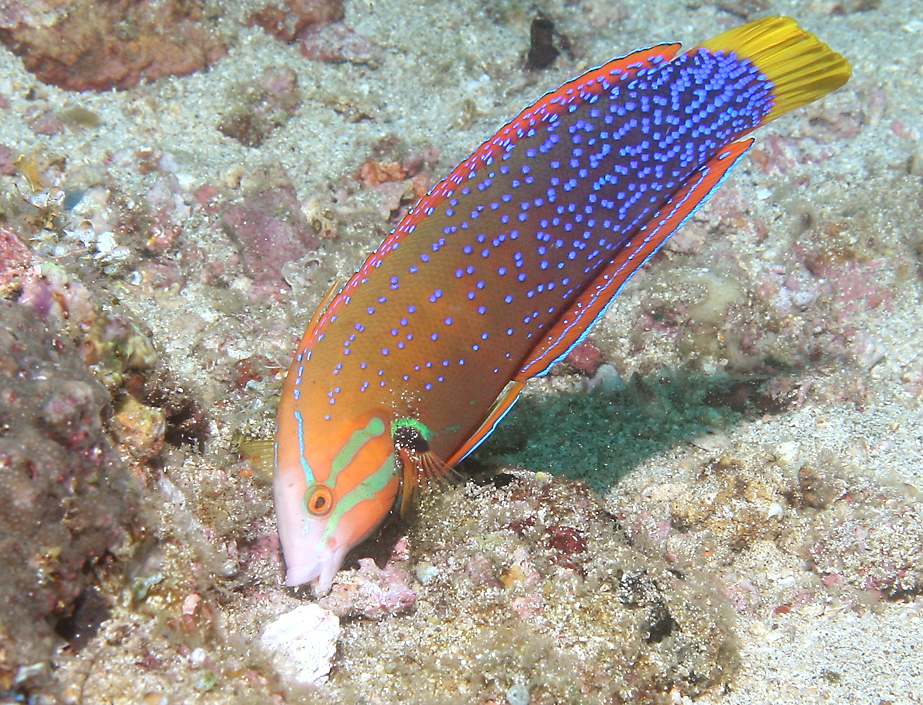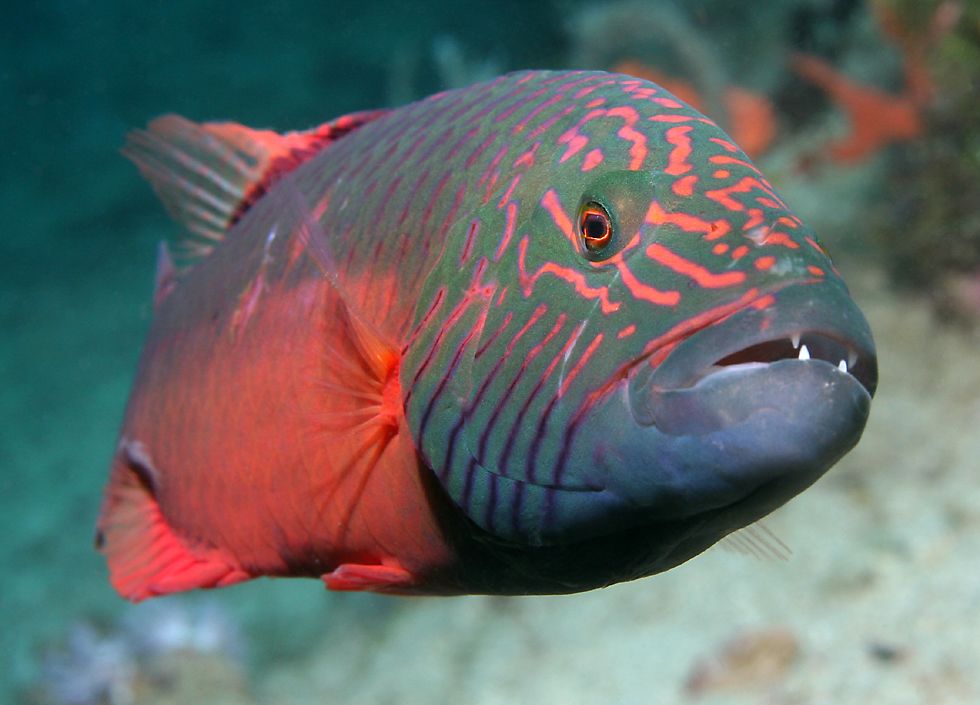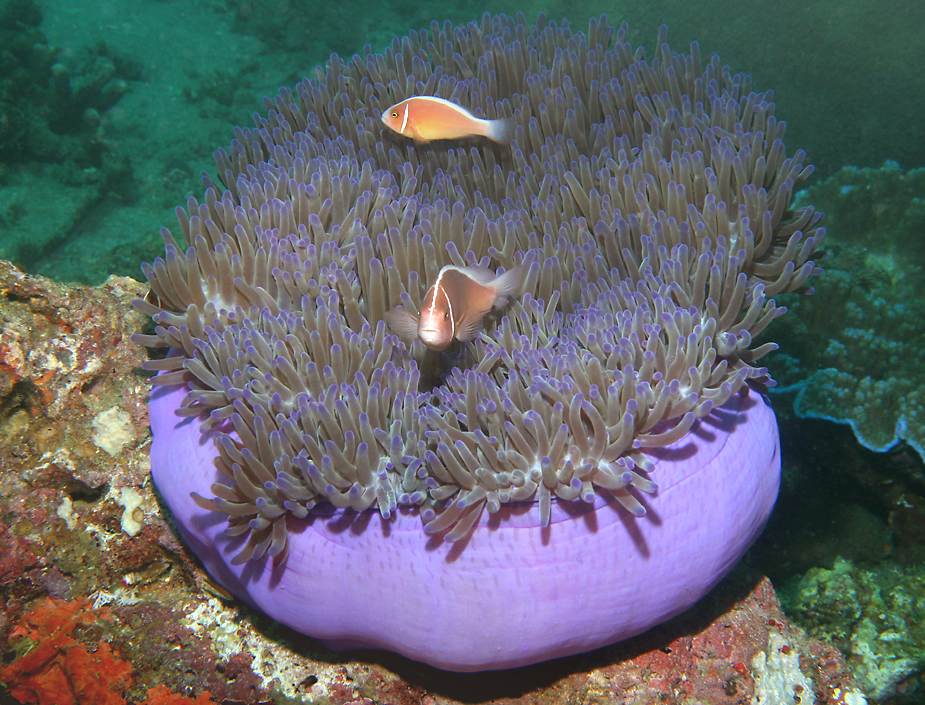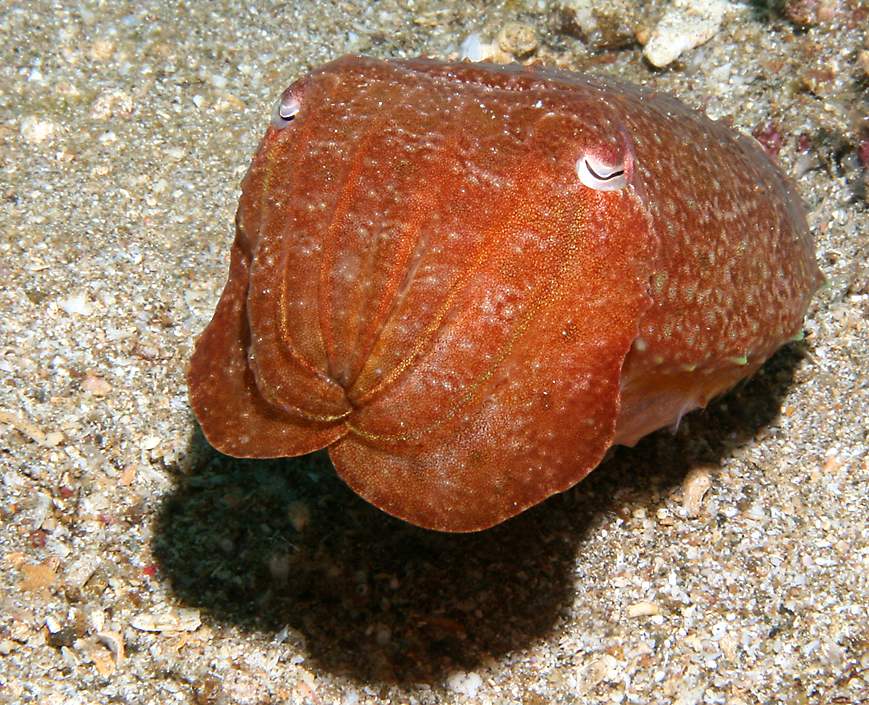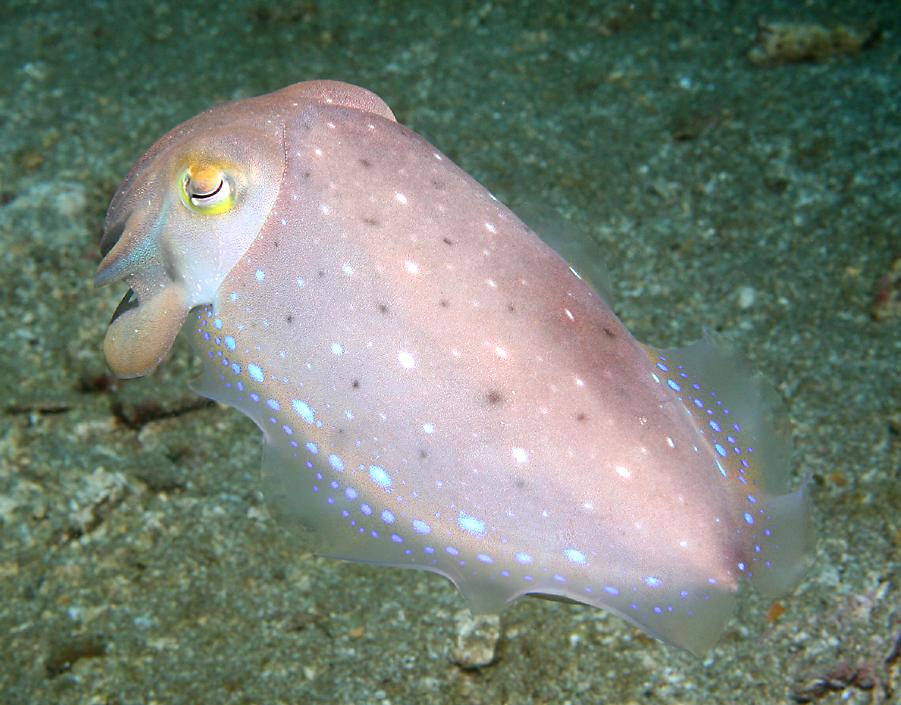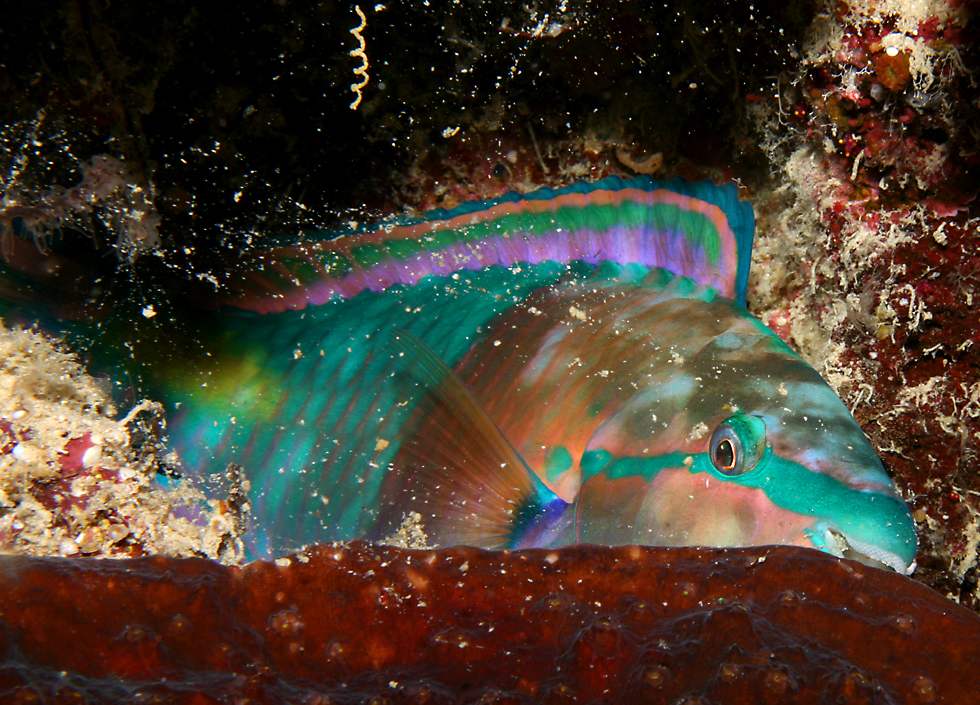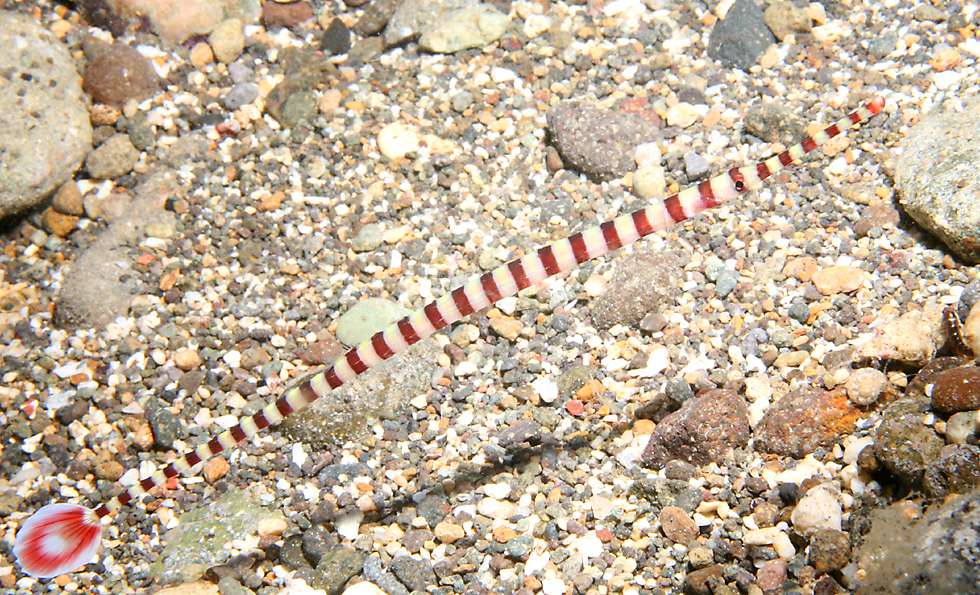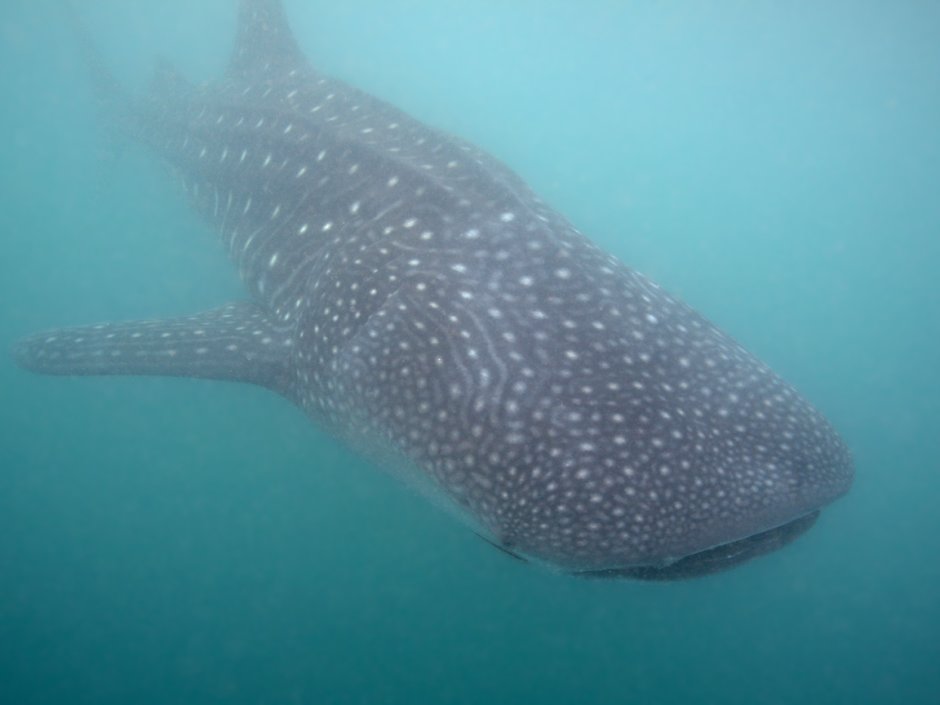Underwater Highlights of the Philippine Islands
|
A royal angelfish together with friend. Sadly, these beautiful angelfish are frequently exported for the aquarium trade even though they usually don't survive long in a tank. |
 |
|
Up to now my trip was following the usual script, but at this point something unexpected happened - I decided to learn to scuba dive. I've been doing underwater photography for over ten years, but always free diving with a weight belt while holding my breath. However the big new camera made me feel a little silly and so I did my PADI open-water certification and ended up doing about 15 dives. On one of the first dives I went back to Balicasag where we did a drift dive along the side of the island where there's a strong current. The divemaster later told me that she was a little shocked and then amused that I swam against the current to get photos of a titan triggerfish which made three or four head-on attacks on me. They're the largest triggerfish, and I knew that females can be very aggressive when they're guarding their eggs, and can inflict a very nasty bite right through a wetsuit with those large teeth, but I've seen plenty of potentially dangerous critters underwater and I feel comfortable to approach them with what I hope is an appropriate amount of respect. It's also a nice security blanket to have a large camera to push them away with. |
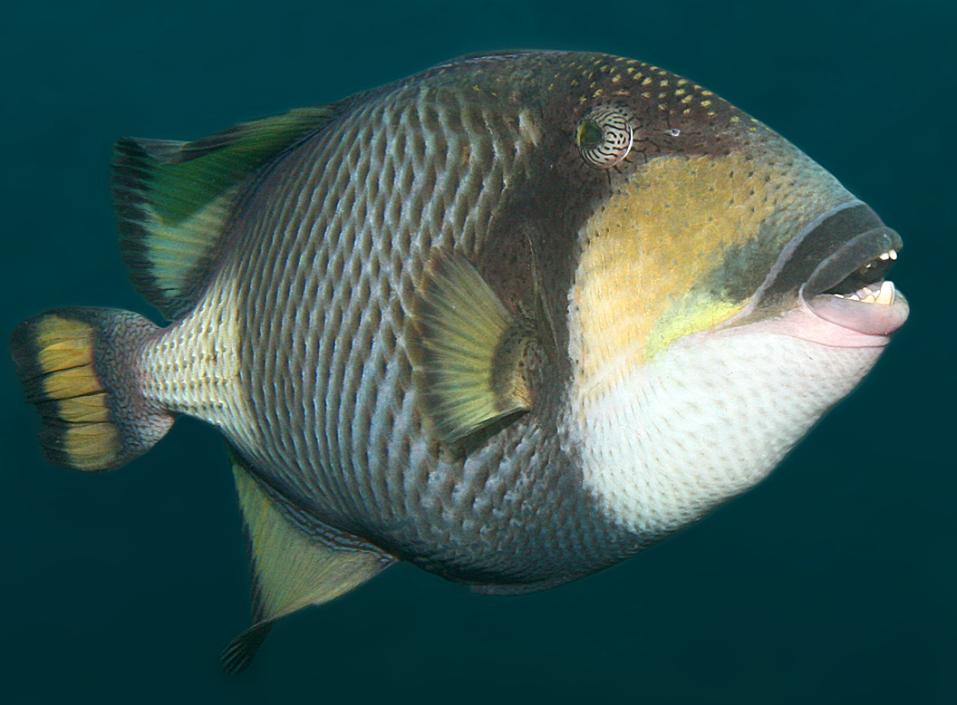 |
|
Lionfish are another family of fish with highly toxic spines, I'd seen plenty of them in Egypt, but nothing to compare with the number and variety of species I saw in the Philippines, a definite benefit of scuba diving rather than free diving. This naughty spotfin lionfish was hovering outside the home of a shrimp or goby at dusk, hoping to pick up a quick meal. |
 |

I've also seen plenty of different types of moray eel over the years, but this is the first time that I've seen a fimbriated moray - for the uninitiated or those whose Latin isn't too good, "fimbriated" means "fringed". So why couldn't they just call it a fringed moray eel?! I swam around with it for several minutes to try to get good angles for a photo, and as you can see it wasn't exactly enchanted by having me as a companion. |

This strange looking creature is a ribbon eel, which to my surprise is also a type of moray, but of the most harmless kind, constantly waving around in the water with its mouth open, waiting for very small fish to come within striking distance. I saw some ribbon eels which were very dark colored and I assumed that they were a different species, but in fact there's only one species of ribbon moray - juveniles are completely black, males are dark with a yellow dorsal fin and females are a combination of yellow and blue, and are sometimes almost entirely yellow. This species is the only type of moray eel which can change color and sex, they're classed as hermaphrodites since fully functional males can change sex and become females, like some species of parrotfish. |
|
To my surprise, one thing I didn't see lots of was butterflyfish, which is a shame since they're such an attractive family. While freediving I photographed many butterflyfish in Egypt and Australia, but I didn't get many in the Philippines. Of course there are exceptions - I got a few lousy photos of a pyramid butterflyfish and a sunburst butterflyfish, two varieties I hadn't seen before, and this one nice photo of a longnose butterflyfish. This species is extraordinarily widespread, it's found all the way from East Africa through the Indian and Pacific Ocean to the coast of South America, and it's even made its way to isolated islands like Hawaii and the Galapagos. |
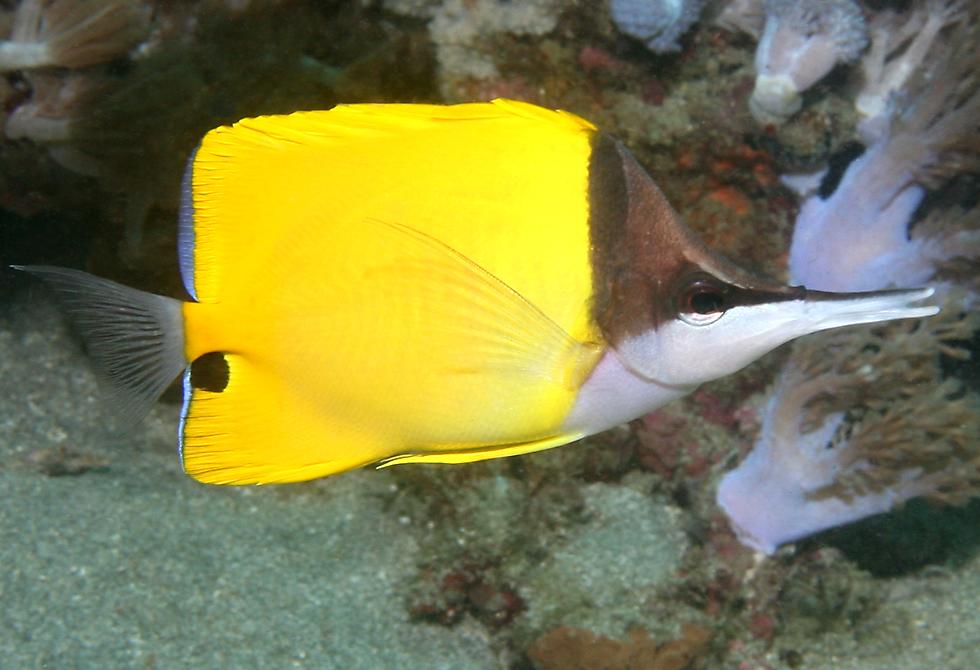 |
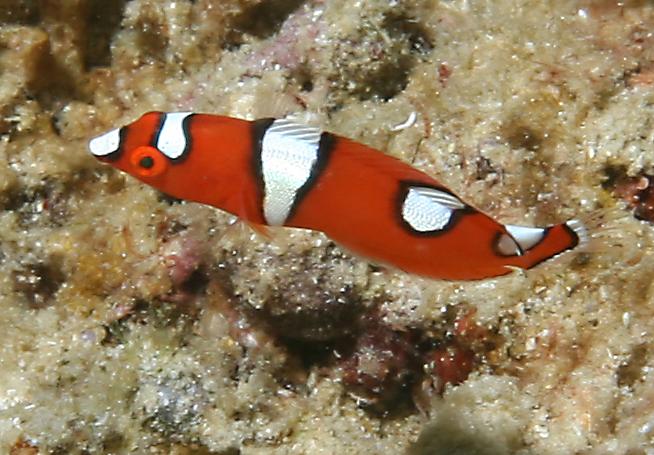
I also had the great good fortune to photograph this baby yellowtail coris, which must have been only 2 or 3 centimeters long. As you can see, the colors and patterns change significantly as the fish grow up. It was very difficult to photograph, swimming jerkily backwards and forwards and never seeming to stop. The bright color of these juveniles advertize their services as cleaners, removing parasites and dead tissue from larger fishes. Once they get bigger they start eating smaller fishes, so it seems that they forget their earlier helpfulness! |
|
This coral trout is also more vividly colored than most. It's not a trout at all, but belongs to the grouper family, which has several colorful members. |
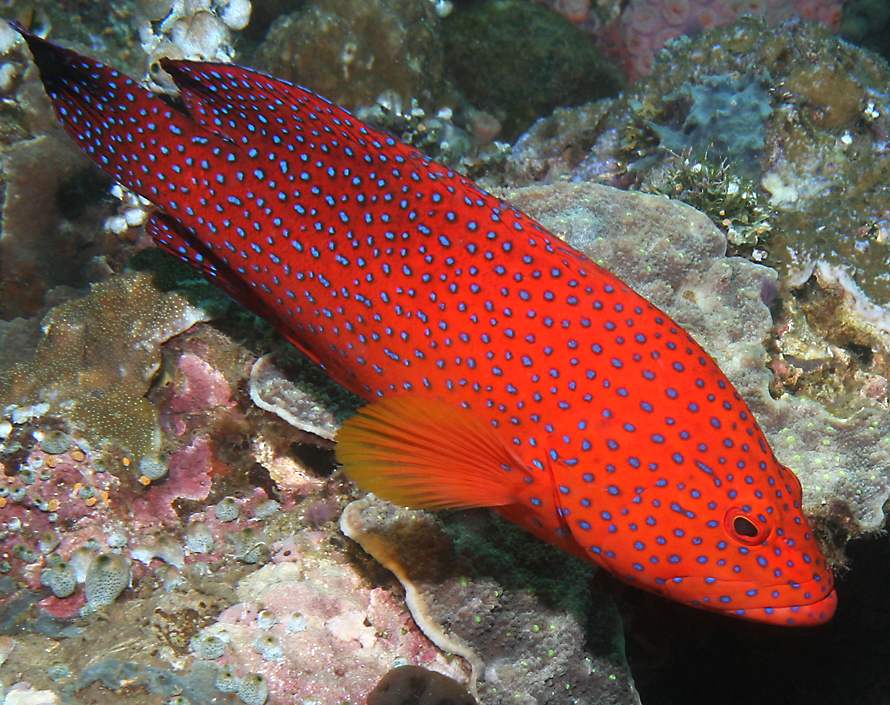
|
|
Things did improve on that first night dive when I came across this sub-adult many-spotted sweetlips; it looks quite different from the adult many-spotted sweetlips I photographed on the Great Barrier Reef in Australia. This one is well on its way in the transformation from the juvenile coloration of white spots on a brown background to the adult coloration of brown spots on a white background. |
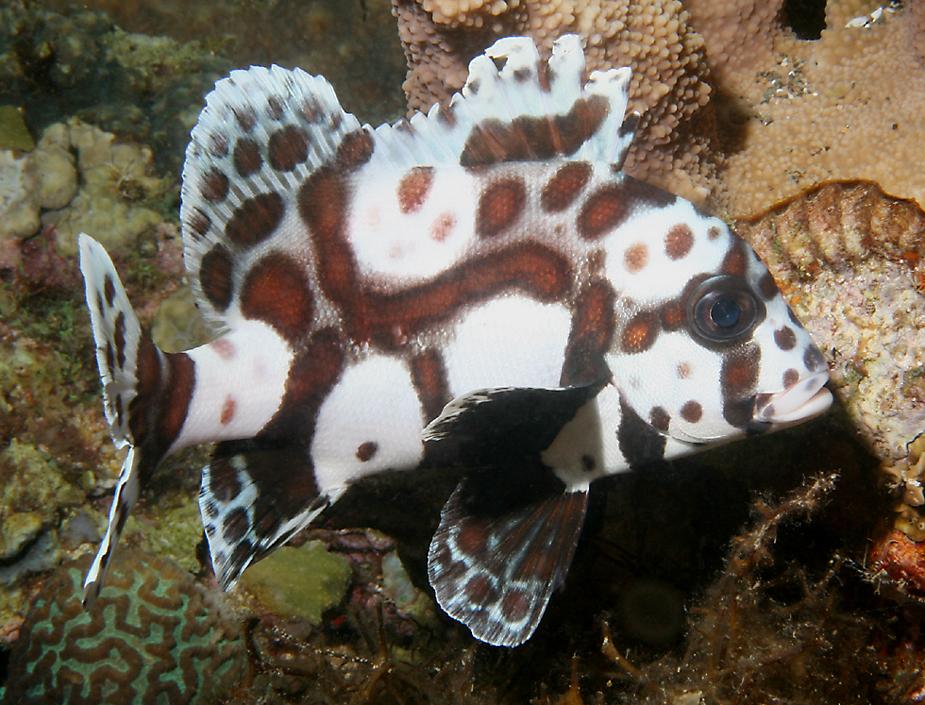 |
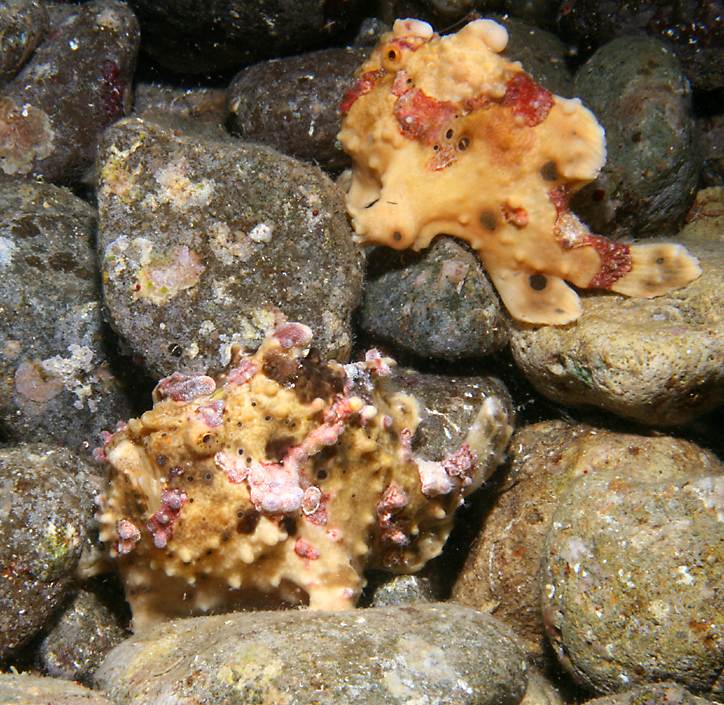
These two warty frogfishes were another highlight of the Basura dive. I've never seen frogfish before, but on this trip I also encountered a large black frogfish in Bohol. They hardly look like fish at all with their strange shape, foot-like fins and warty skin. They lie in wait pretending to be sponges and then pounce on any fish which come too close. They can even change their colors to match their environment better. To improve their hunting odds, frogfish are equipped with a small lure which they twitch above their mouth to entice their prey to come closer, which is why they've also been given the name "anglerfish". You can just make out the lure folded back between the eyes of the frogfish at the front of this photo. If the lure is lost then it can be regrown over the space of a few months. Frogfishes don't just eat small prey, their mouths and stomachs can expand to accomodate a meal larger than the size of their own body. They're also cannibals, so other frogfish need to keep a cautious eye out for their friends! To avoid being eaten they can rapidly swallow lots of water to swell their bodies up in exactly the same way as some pufferfish do. |
|
I took all of the photos on this page using a Sigma 50mm macro lens, which gave me a capability which I've never had underwater before - to make closeup images of very small critters so that they fill the entire photograph. I've done this for many years with insects and spiders, so I was very eager to do this same type of photography underwater. Sea slugs, also called nudibranchs, are one of the underwater macro photographer's favorite subjects because of their beautiful patterns and colors, like this one with the scientific name Chromodoris coi. Anilao is considered one of the best spots in the Philippines for nudibranchs, so together with the ones I saw in Bohol I've put together an entire page of sea slugs of the Philippines. |
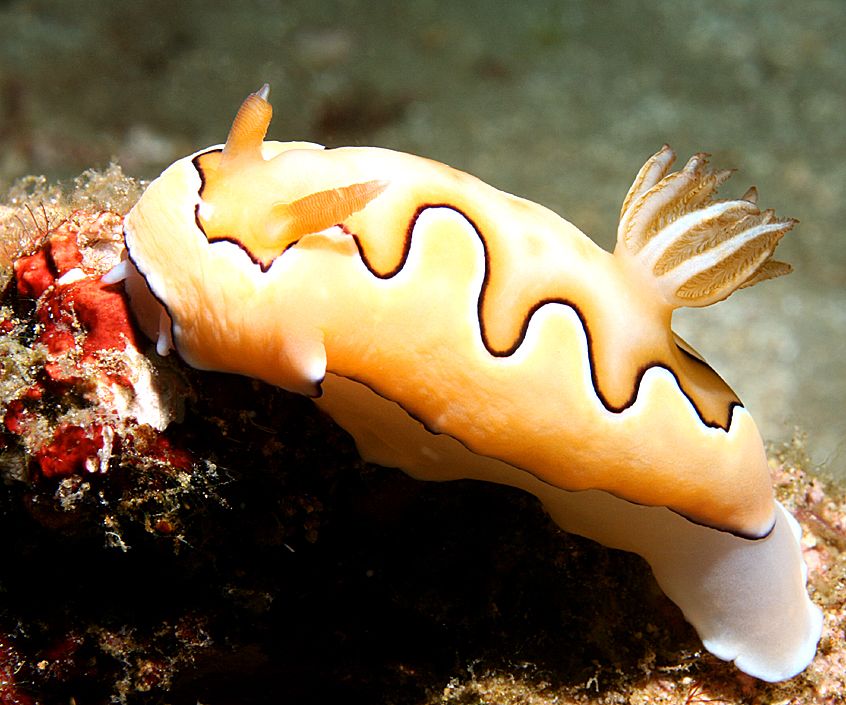
|
